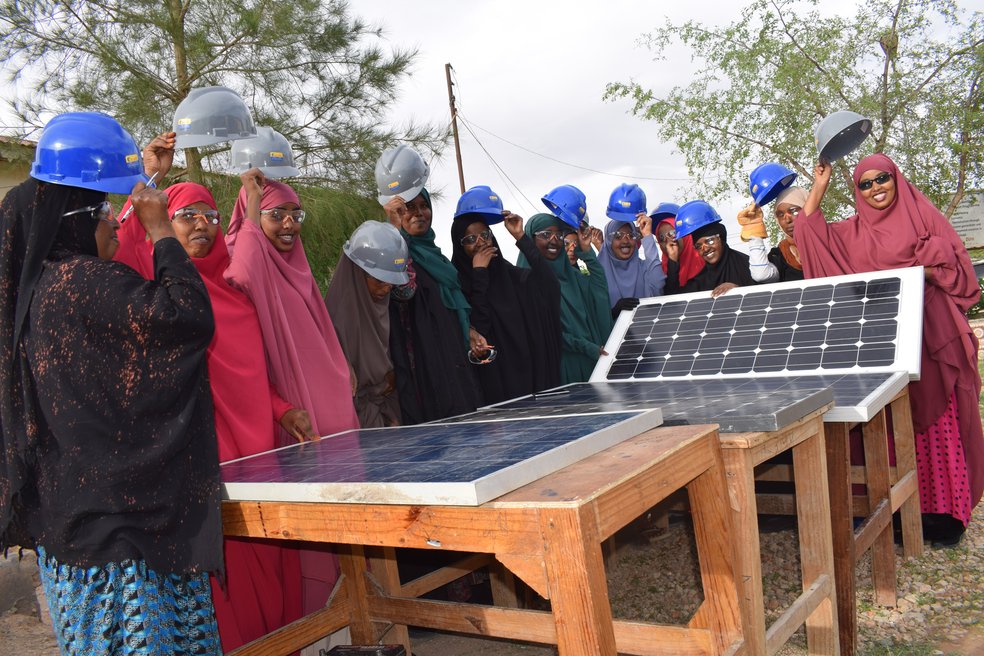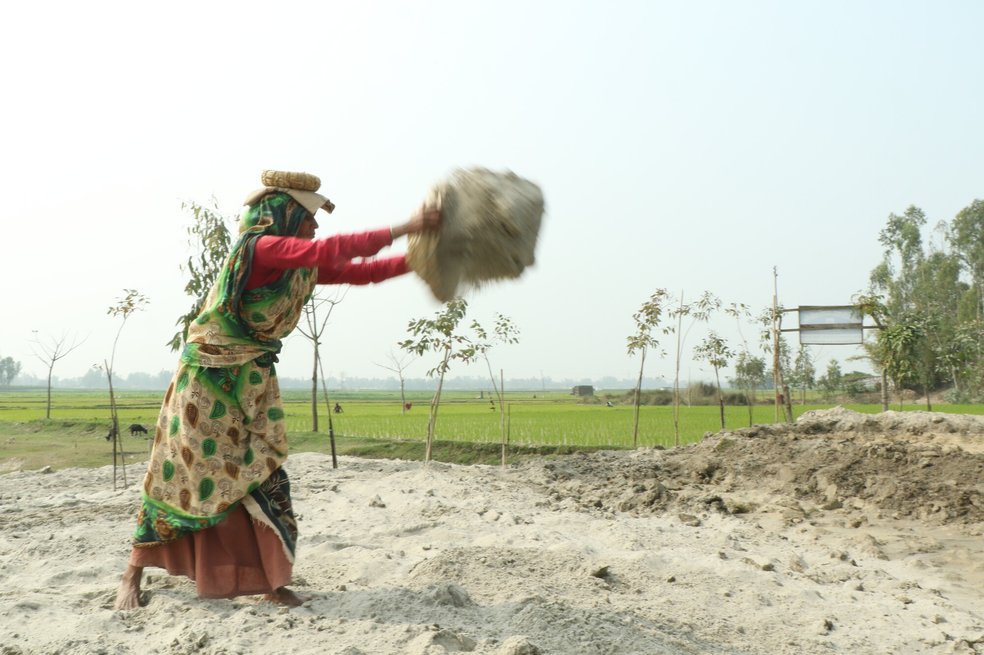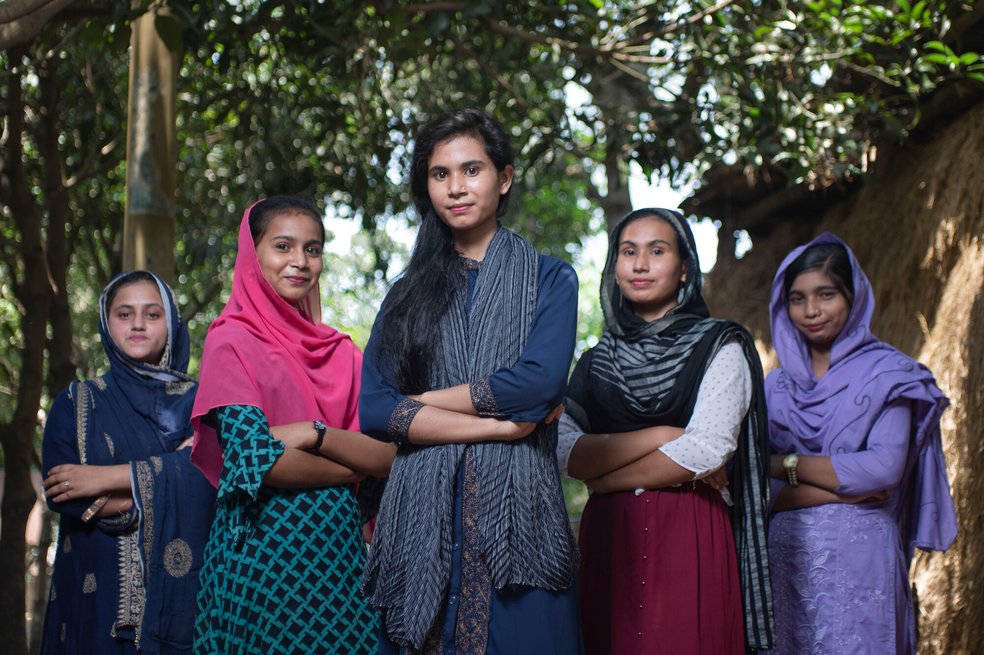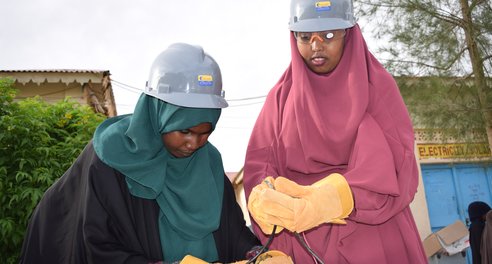Climate change is reshaping how young people learn, earn, and envision their futures. With 53% of youth globally expressing a desire to work in green jobs, their ambitions are clear: they want livelihoods that contribute to climate action and sustainability. This demand aligns with a rapidly expanding green economy. The renewable energy sector alone is projected to support up to 40 million jobs by 2050, with strong growth already underway across solar, wind, and energy efficiency industries (IRENA).
Agrifood systems - where 44% of working youth are already employed - offer another critical pathway, especially in climate-vulnerable regions. In crisis-affected areas, this figure rises to 82%, underscoring the importance of climate-smart agriculture and water management technologies in building resilient livelihoods.
To unlock these opportunities, education and training systems must equip young people -especially those in underserved communities - with market-relevant green skills. CARE’s experience implementing two major programmes offers practical insights:
BRIDGES (Somalia/Somaliland, EU-funded) strengthened TVET systems for renewable energy and road construction. In partnership with the Technical University of Eindhoven, the programme co-developed competency-based curricula, trained instructors and assessors, and linked graduates to apprenticeships and jobs in emerging green sectors.
SHOUHARDO III (Bangladesh, USG-funded) combined climate-smart agriculture, water management technologies, and enterprise skilling with market linkages, helping youth -especially women - enter green value chains and increase incomes.
Here are five lessons for making green skilling inclusive and impactful - grounded in global guidance and real-world results.
1) Blend technical and foundational green skills - and tailor them to context
To succeed in the green economy, young people need a breadth of green skills:
Core skills for sustainability: Environmental awareness, climate literacy, resource efficiency, and problem-solving.
Transferable skills: Communication, teamwork, digital literacy, and entrepreneurship.
Technical skills: Occupation-specific competencies in areas like solar PV installation, climate-smart agriculture, or carbon accounting.
While foundational green skills are universally important, technical skills must reflect local realities. Gender, geography, education level, and market opportunity shape which skills are most relevant - and accessible.
For example:
- Young women may need leadership and digital skills to overcome barriers in male-dominated sectors.
- Rural youth benefit from competencies in climate-smart agriculture, solar irrigation, and green entrepreneurship.
- Urban youth may require skills in renewable energy, sustainable transport, and circular economy services.

In Somalia and Somaliland, BRIDGES used a youth- and gender-sensitive labour market assessment to identify solar PV and road construction as priority sectors. These trades aligned with national development plans, offered viable employment for youth with limited formal education, and were validated by employers. CARE co-developed 12 competency-based curricula with ministries and industry, embedding teamwork, safety, entrepreneurship, and gender-sensitive approaches.
Why it matters: A balanced mix of foundational and market-relevant green skills helps young people not only get jobs - but lead change.
2) Expand access through flexible, localised delivery
One in four young people worldwide is not in education, employment, or training (NEET), and women are disproportionately affected. Inclusive green skilling requires flexible delivery: adaptable timetables, childcare support, transportation stipends, and digital or blended learning options. Expanding physical training platforms in rural areas is equally critical, alongside leveraging technology to reach youth in informal urban settings.

In Bangladesh, SHOUHARDO III expanded access by delivering climate-smart agriculture and enterprise training through local youth hubs and mobile outreach. The programme prioritised women and rural youth, offering flexible schedules and community-based training in areas with limited infrastructure. This helped reach nearly 10,000 youth - half of them women - and supported their entry into green value chains.
Why it matters: Without intentional access strategies, green skilling risks reinforcing existing inequalities.
3) Link training to work-based learning for stronger employment outcomes
Dual training models that combine classroom instruction with on-the-job experience consistently improve employment outcomes in green sectors, where hands-on learning is essential.
In BRIDGES, CARE facilitated 346 apprenticeships with 16 firms, giving trainees practical experience in installing solar systems and maintaining roads. Female completion rates reached 92.8%, and graduates in dual training were 9 percentage points more likely to be employed than those in classroom-only tracks.
Why it matters: Work-based learning builds real-world competencies and confidence -especially in green sectors where employer engagement drives relevance.
4) Invest in trainer capacity and quality assurance
In many low- and middle-income countries, fewer than 50% of TVET instructors have formal pedagogical training. Inclusive, sustainability-integrated pedagogy and mastery of up-to-date subject content are essential.
In BRIDGES, CARE trained over 40 instructors and 40 assessors in pedagogy, gender-responsive teaching, and green skills content. Trainees reported 96% comprehension of competency-based content and rated dual training quality at 91%.
Why it matters: Skilled trainers and assessors ensure that green curricula translate into real competencies—while creating inclusive learning environments.
5) Pair training with career services and micro-enterprise support
Youth unemployment remains three times higher than adult unemployment globally, and women face additional barriers to entering green sectors (ILO). Many green jobs offer entrepreneurial pathways, yet access to finance, networks, and market entry remains limited.
In BRIDGES, CARE provided career readiness sessions, job fairs, and employer networking events. It also offered business planning workshops and startup kits for solar installation and maintenance. As a result, 19% of graduates moved into self-employment, and 66% of those employed worked in the private sector.

In SHOUHARDO III, CARE helped establish over 1,000 youth-led service providers and scaled Village Savings and Loan Associations (VSLAs), enabling youth - especially women - to save, access credit, and invest in their businesses. This contributed to a 358% increase in average incomes and improved access to formal banking and low-interest loans.
Why it matters: Linking green skills to markets - through career services, mentorship, and enterprise support - turns training into transformation.
Implications for policy and practice
- Finance system functions - not just courses: Invest in labour market assessments, trainer development, assessor networks, and data systems that validate green skills.
- Institutionalise work-based learning: Tie incentives to apprenticeships and dual training in green industries.
- Standardise and recognise green competencies: Align standards, curricula, and micro-credentials for emerging green roles.
- De-risk the transition to green employment: Budget for career services, mentorship, and microenterprise finance.
- Embed inclusion in green skilling systems: Use scholarships, flexible delivery, safe spaces, and localised platforms to increase participation of young women and rural youth.



